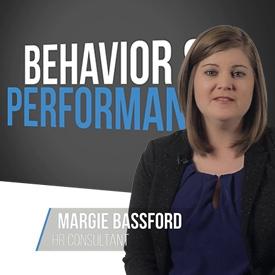The winter months usually bring with them a cold and flu season that can hit employees hard. Add to that the risks associated with COVID-19, and effectively maintaining a healthy work environment may be especially challenging for you this year. If your policies and procedures are outdated or haven’t been reviewed in a while, dealing with a workforce impacted by viral illnesses can leave your company scrambling.
Here are some ways you can help build a healthy work environment and keep operations running smoothly.
How to maintain a healthy work environment
By taking measures to help prevent the spread of illnesses, as well as implementing workplace health protection programs and policies employers can reduce health risks for employees — regardless of where your team is located.
1. Reiterate best practices
The COVID-19 pandemic has now become a reality of life. Many local health departments continue to recommend employers take steps to slow the spread of the virus. These include — but are not limited to — proper handwashing, disinfecting common areas, and social distancing. Employers should continue to reiterate these best practices to employees, as well as any additional practices that the employer is implementing. If your company previously hosted an in-house immunization clinic or sponsored an onsite health fair, consider disseminating information about flu and COVID-19 vaccines for interested employees.
2. Educate employees and refer to trusted sources
Educating employees on health-related issues and updates can pay off in the long run. The CDC continues to be among the top trusted sources for finding the most up-to-date facts and information. And as laws, regulations, and guidance related to COVID-19 continues to evolve, employers must continue to monitor their obligations under federal, state and local laws.
3. Keep supplies on hand to reduce the spread of illness
If some or all of your employees are working onsite, an investment in hand sanitizers, antibacterial soap and disinfecting agents can pay dividends by improving employee health.
4. Assess return to work scenarios
If you have employees who have been working from home due to the COVID-19 pandemic, you may be considering when you can bring them back into the workplace, or debating whether to continue remote work arrangements for the long-term. In a recent Paychex snap poll*, 39% of business owners cited employee safety as the reason for not returning to the workplace, outpacing all other reasons for sustaining a remote work arrangement.
As the COVID-19 pandemic continues, returning to the workplace will require careful planning. This may include changes and updates to existing policies, new or additional workplace safety protocols, considerations related to mandating or encouraging employees to receive COVID-19 vaccination (see next section), providing support for employees as they return to work, and more. Of course, sustaining a permanent work-from-home arrangement requires its own protocols and best practices.
5. Determine your role in COVID-19 vaccination
Many business leaders see themselves playing a role in employee vaccination. The Paychex snap poll* found that 75% of small businesses (10-49 employees) and 85% of medium-sized businesses (50-500 employees) plan to motivate their employees to get the COVID-19 vaccine. You may be able to develop mandatory vaccination policies for employees that comply with federal requirements. According to current guidance from the Equal Employment Opportunity Commission, employers may elect to require employees to get a COVID-19 vaccine, as the virus presents a “direct threat.”
However, employees may refuse or be unable to be vaccinated due to a disability, medical condition (including pregnancy), or a sincerely held religious belief. As an employer, you must determine whether an unvaccinated employee would pose a direct threat to themselves or others in the workplace, and whether they can be reasonably accommodated to enable them to continue performing their job.
It’s important to note that employers who request or require their employees to be vaccinated may also need to compensate non-exempt employees for their time spent obtaining the vaccination, including traveling to and from the vaccinate site.
6. Review other business policies
If you haven’t done so already, take a look at your business’s time and attendance policies, including paid time off and sick leave for employees. Review your employees’ rights to paid leave and job protection under state and local laws. Employers should pay specific attention to notice and/or posting requirements, as individual state and local laws vary and have different obligations for employers. Keep in mind that while the mandate requiring covered employers to provide leave as part of the Families First Coronavirus Response Act (FFCRA) expired on December 31, 2020, covered employers may elect to continue to offer leave under the FFCRA framework on a voluntary basis through March 31, 2021. If you’re uncertain about how to proceed, consider working with an experienced HR professional to help you throughout the process.
7. Update your handbook to reflect new policies and procedures
Once you’ve made decisions around your current policies, along with any new ones that address matters related to COVID-19, consider whether these are reflected in your employee handbook. Although it’s not always required by law, this communication tool could:
- Address employee rights under applicable local, state, and federal laws and regulations;
- Meet specific notice requirements under certain laws;
- Serve as a line of defense against legal actions brought against the business by an employee or a former employee;
- Help consistently communicate company expectations to employees; and
- Help you worry less about issues that come up that could negatively impact business operations.
If you decide to make any changes to your policies, update your handbook to reflect them. In general, this document can help regularly remind employees that the handbook isn’t a list of rules, but is a tool for them to better understand their rights and benefits as well as the company's policies.
Unprecedented times call for solid HR policies
Effectively managing best practices for a healthy workplace and adequately addressing new and expanding COVID-19 laws and regulations require up-to-date HR policies. A well thought-out plan lays the groundwork for maintained company productivity and a healthy working environment. Consider partnering with an HR professional who can help you develop policies and procedures that not only work for your business, but also account for any federal, state, or local laws and regulations, as well as guidelines.
* Paychex conducted an online survey of 300 principals of U.S. companies with 2 to 500 employees. The survey was fielded Jan. 27-Feb. 2, 2021.









